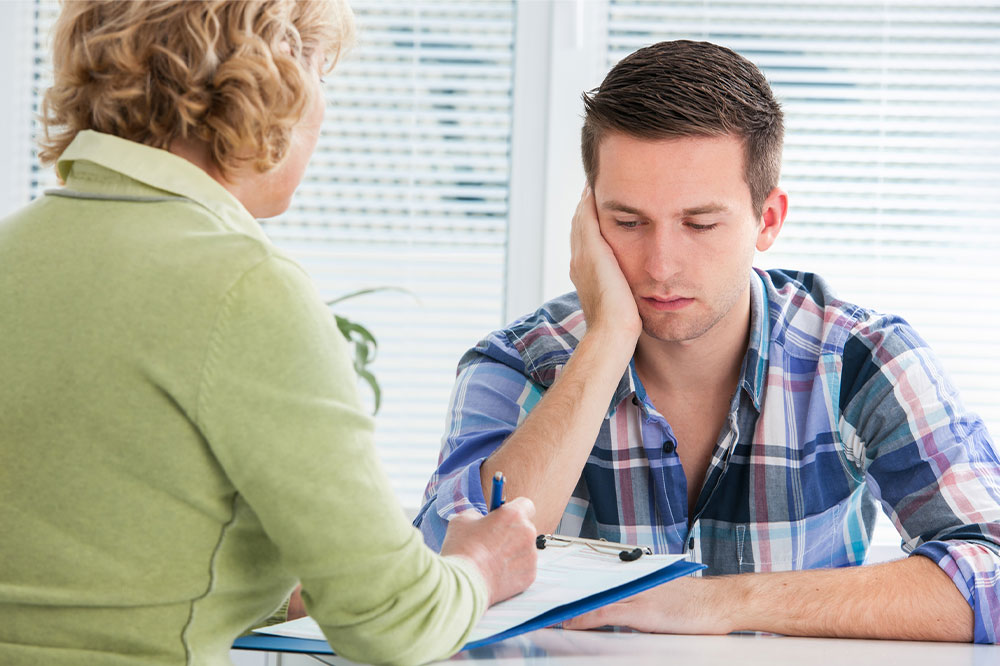What is Anxiety – Know Its Symptoms and Management Tips
Anxiety is a serious mental health condition that affects millions of people worldwide. In most cases, anxiety is a natural response to stress or danger. It can overwhelm many people and interfere with their lives. Anxiety can also lead to panic attacks, which are intense periods of paranoia. Knowing the condition up close can help individuals understand how it affects them. Assessments like the three-minute anxiety test can help people delve deeper into their condition.

What is Anxiety?
Anxiety is a natural emotional response to stressful or challenging situations. It is a feeling of unease, apprehension, or worry, accompanied by physical sensations such as a racing heart, sweating, trembling, and muscle tension. People with such disorders may experience excessive, persistent, and uncontrollable anxiety.
When anxiety becomes excessive or persistent, it can interfere with daily life and become a mental health disorder. Some examples of anxiety disorders include panic disorder, generalized anxiety disorder, social anxiety disorder, and obsessive-compulsive disorder.
Symptoms
Anxiety can affect people in many ways. Some common symptoms include:
- Feeling nervous or tense
- Having a sense of impending danger or doom
- Increased heart rate
- Rapid breathing or hyperventilation
- Sweating
- Trembling or shaking
- Feeling weak or tired
- Trouble concentrating
- Insomnia or difficulty sleeping
- Gastrointestinal problems
It is essential to seek help from professional therapists if the symptoms become chronic or interfere with daily life. It is possible to manage the condition and improve overall well-being with appropriate treatment and support.
Anxiety Tests
Anxiety Tests refer to a simple self-assessment tool that can help individuals identify if they are experiencing any symptoms. It consists of questions about how you feel in various situations. Such tests can be used for teens. It can help a person learn more about high functioning anxiety, chronic anxiety, and anxiety attacks.
It asks you to rate your level of anxiety from 0 to 10, with 0 being no anxiety and 10 being the highest level of anxiety possible.
The test typically covers social anxiety, generalized anxiety, panic attacks, and phobias. It’s critical to note that this test is not a substitute for a clinical diagnosis. Those persons who believe they may be experiencing some symptoms should seek the advice of a qualified healthcare professional.
There are a number of variations of such chronic anxiety tests, but it’s essential to use a reliable source to ensure the accuracy of the assessment. It’s also important to remember that the results of any high functioning anxiety test should be used only as a starting point for discussion with a healthcare professional rather than a final diagnosis.
Taking the Test
Any version of the three minute test is a self-assessment tool that can help you evaluate the severity of your anxiety symptoms. Following are the steps to take the test:
Find a comfortable area where you won’t be interrupted for the next few minutes.
Set a timer for three minutes.
During the next three minutes, consider how you have felt regarding anxiety symptoms over the past few weeks. These may include:
- Feeling nervous or tense
- Sense of impending panic, danger, or doom
- An increased heart rate or sweating
- Feeling weak or tired
- Having trouble sleeping or staying asleep
- Trouble in concentrating or focusing
- Feeling irritable or restless
After the timer goes off, use the following scale to rate the severity of your symptoms:
- 0: No anxiety symptoms
- 1-5: Mild anxiety symptoms
- 6-10: Moderate anxiety symptoms
- 11-15: Severe anxiety symptoms
Based on your score, you can determine if you may benefit from seeking professional help for your symptoms. It’s important to note that such anxiety attack tests are not a substitute for a professional diagnosis or treatment recommendation. If you are experiencing significant distress daily, seeking help from a mental health professional is important.
Ways to Manage Anxiety
Several things can be done to manage one’s symptoms. Some common options include:
Cognitive-behavioral therapy (CBT)
With this therapy, people can recognize and alter negative thought patterns and actions that fuel their anxiety. CBT can help you learn coping skills to manage your symptoms and develop new ways of thinking about and responding to anxiety-provoking situations.
Treatment options
Your physician may recommend various treatment options that can help manage anxiety symptoms. These can regulate the brain’s chemicals that affect mood and anxiety. It’s crucial to discuss the advantages and disadvantages of these treatments with your healthcare practitioner.
Lifestyle changes
Making gradual changes in one’s lifestyle can also help in lowering anxiety. Here are some strategies you can try:
- Get regular exercise
- Eat healthy foods
- Employ relaxation methods
With the high prevalence of anxiety disorders globally, it’s essential to understand the symptoms, causes, and available treatment options. One can find a treatment plan that works for them and stick with it. Over time, with the right treatment and support, most people with this condition can manage their symptoms and live fulfilling lives.
When it comes to anxiety tests, they can be useful for identifying potential symptoms. These tests typically involve answering a series of questions about your thoughts, feelings, and behaviors, which are then scored and interpreted to give you a measure of your anxiety levels.
If an individual is experiencing anxiety, they should seek help. Talk to a healthcare provider, a therapist, or a mental health professional to get the required support. It is important to note that taking care of one’s mental health is as important as one’s physical health.


